A couple of terms you will come across in your Cymbidium orchid travels are Seedling and Mericlone. And there is an important difference between them. The seedling and mericlone have different uses too. So first, let’s look at quick explanation of where our orchids come from.
Where do our Cymbidium orchids come from?
A new plant can be sourced in the following ways:
Division
A division is a plant produced from breaking a large plant into two or more pieces. Divisions are often preferred by growers and hobbyists alike, as they will produce flowers identical to the plant the division was taken from. Dividing is great as it will give you a new plant straight away and increase the size of your collection. Or give you a plant to sell or swap for another! And all for free!
Back Bulb
A back-bulb propagation is a leafless bulb, removed from a large plant, when dividing it. A back-bulb, when removed and potted on, may produce side growths which grow into green bulbs and often flower in 2-3 years from being removed from the mother plant. Back-bulb propagations are the same as the above divisions and will also increase the size of your collection for free!
Seedling and Mericlone
It is unlikely that the very original ancestors of our species orchids survive today. Most likely those growing in the wild are descendants of those original ‘Adam and Eve’ plants. They are most likely natural self-hybrids. If we are to believe the statement ‘they grew from seeds’, they were once seedlings.
Today, many of our hybrids are many generations removed from species orchids. They are a mixture of many species orchids. These days, our hybridisers selectively pollinate superior varieties, produce seed, and grow new varieties from those seeds. They are known as seedlings.
Seedlings
A seedling is grown from a seed, produced by hybridizing or crossing two flowers from different plants. Or even flowers from the same plant, called a selfing. But it will take several years to grow on and flower. A seedling shares some of the characteristics of both of its parents.
Each seedling is different to all of its siblings, similar to human brothers and sisters, from one set of parents. It might be given a registered name like Cym. Molten Gold, or it might just be known by its parents names, for example Cym. Scott’s Sunrise x Cym. Crater.
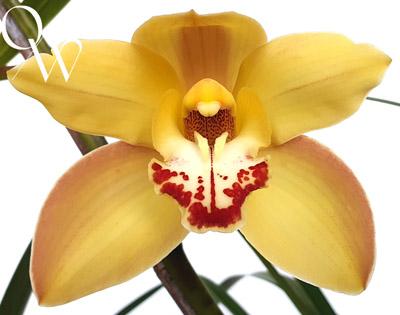
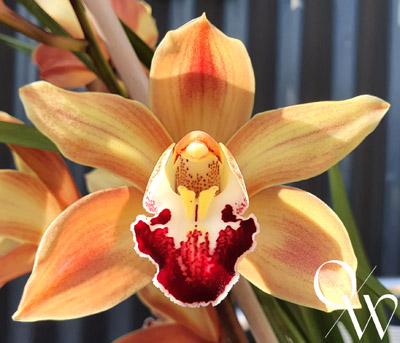
Just as illustrated here in these two photos, seedlings are all different. I have two plants from the same crossing of Cym. Scott’s Sunrise x Cym. Crater. Registered as Cym. Molten Gold. These plants originated from the same seed pod, and were grown together in the same community pot, however are vastly different in appearance.
They are referred to as siblings, and growers often grow, and flower, hundreds of siblings to choose the very best of the hybrid crossing. The best ones are then often cloned, or mericloned for commercial sale.
Orchid clubs always promote the development of new and better varieties and most have a new seedling division in their monthly judging competitions.
To distinguish these new varieties, and for judging them, they rule that a plant grown from seed, is categorised as a seedling, until it flowers for the first time. On the show bench, the seedling plants compete against other seedling plants. Sometimes a seedling is so good it wins a national award and then of course everyone wants it!
There are usually other conditions in judging seedlings too. The plant must be undivided, and it is considered a seedling until the end of the flowering season in which it first flowered. Some clubs limit the pot size to preclude a big, reluctant flowering plant from being judged against smaller fast flowering newcomers.
I like to think of seedlings similar to juniors, at a sporting club. They need encouraging and nurturing. They often cannot compete against the older and established varieties, until they mature. A good one causes excitement and has the potential to improve the standard at the club. After the end of its first flowering season it graduates into the seniors. Hopefully, it improves and develops more as it gets older.
Selecting Good Varieties is Important!
If you are a good judge, and select new seedlings with good potential, you are likely to flower some good new varieties. The more seedlings one grows, the more likely you are to get a good one. The use of good parents cannot be over emphasised. More importantly, the use of ordinary or substandard parent plants is likely to fail and bring disappointment, whilst other growers will have improved their collections.
Some growers grow large percentages of seedlings. They will discard large numbers of inferior plants, after they flower. Many are culled even before flowering if they grow poorly. Good selection and patience is very necessary. Look to successful growers who grow lots of seedlings for guidance. Beware of advice, or purchasing from growers who are not prepared to grow lots of what they sell.
Mericlone
A mericlone is a clone of a particular plant. An exact copy. Mericlones of a particular plant should all be identical to the cloned plant and flower the same but will take several years to grow on and flower. The only exception to this are the feathered and splash flower mutations that have become so popular. These traits will very rarely clone true to form. A division or back-bulb propagation is the only true way of obtaining another identical plant.
When a superior new variety is produced, everyone wants a piece of it! But there is only 1 original!
Many commercial growers grow on hundreds, or even thousands of seedlings to get a good one. We usually get a big range of quality, from great to poor and they will vary with particular parent plants, and the level of judging and expectation.
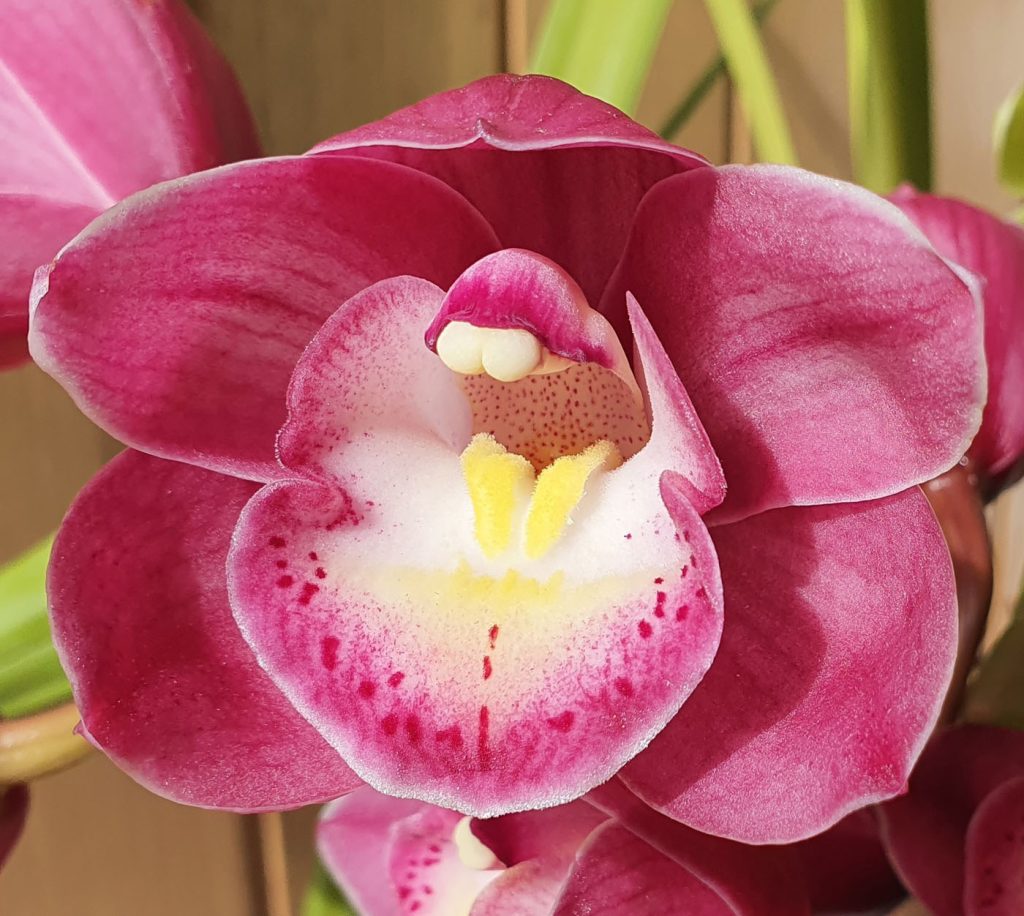
We choose the best of the bunch, and want large quantities of it produced quickly. In the early twentieth century, the only way to multiply a plant was to grow it on, and divide it – a very slow process. Nowadays we use tissue culture techniques in a clean area of a laboratory, to produce very large numbers of plants, quickly. Tissue culture is where we remove a very small piece of tissue, from a ‘mother plant’, and place it in a small sterile container with a nutrient rich growing medium. We keep it warm and provide good lighting conditions, and it starts growing larger.
The Mericloning Process
We usually start with a piece of plant tissue smaller than a pin head. When the piece of tissue is big enough we remove it, under sterile conditions, divide it into three or four pieces, and return them to the sterile container. The multiple pieces of tissue, called protocorms, are allowed to grow larger, and then each is chopped into multiple pieces. When we have sufficient protocorms, we allow them to grow leaves and roots, and they form small plants.
Each plant should be genetically identical to the mother plant. The plants produced from this process are called mericlones. They are clones of the mother plant.
Usually, it is possible to produce hundreds of mericlones, from a mother plant, within twelve months. Some varieties are more difficult, and may take longer. Occasionally, a variety is very difficult to get started, and sometimes virtually impossible.
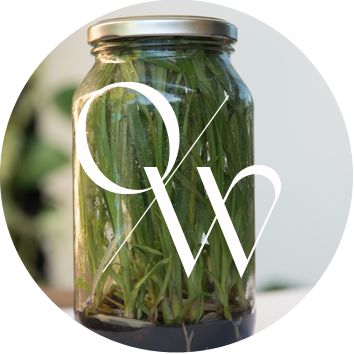
There are risks in this process. Some plants mutate or grow poorly. When they flower, they may not flower identical to the mother plant. The probability of getting a mericlone to flower, identical to the mother plant, is generally regarded as better than ninety five per cent. Some experts claim ninety nine per cent probabilities.
Cloning only the Original Mother Plant is Important!
There is a risk if too many plants are produced from one piece of the mother plant. We hear many claims of how many plants should be produced before the old tissue becomes unreliable, and the process restarted. Some claim no more than two hundred and fifty. Others consider two and a half thousand is quite safe. We have heard of tens of thousands being produced from one piece of tissue, with minimal problems.
We believe the experience of the laboratory technician is the key. An experienced operator can see at an early stage if there is a problem, and discard the tissue. A less experienced operator may not see a problem. The mother plant is also a big factor. Some are quite stable – others quickly mutate, cause problems and need recloning, or abandoning.
By far the biggest risk is the practice of pirating tissue, from a flask supplied by another nursery. A small piece of tissue is sometimes removed from a flask, and multiplied, then grown on and offered for sale. But be prepared to ask the supplier of any mericlones, where they sourced the tissue from. Did their mericlones come from the original mother plant? Do they pirate tissue from other growers? Beware; some do not give honest answers.
So there is a difference between a seedling and mericlone. Both have their advantages! And both are created for different purposes.
Originally written and compiled by Graham Morris from the Cymbidium Orchid Club of South Australia.
This article on seedling and mericlone has been edited and updated for use on this site.
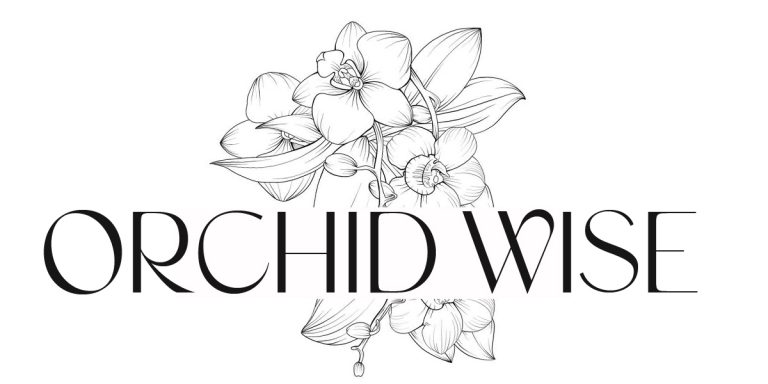
Pingback: Orchid of the Week - Orchid Wise